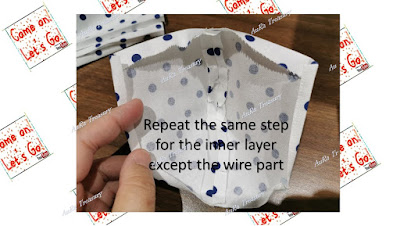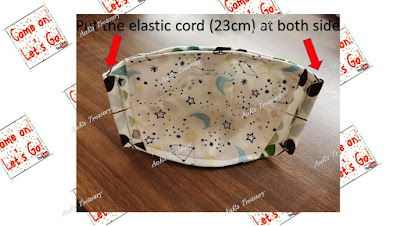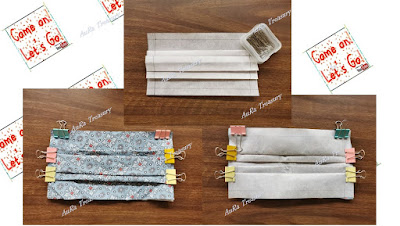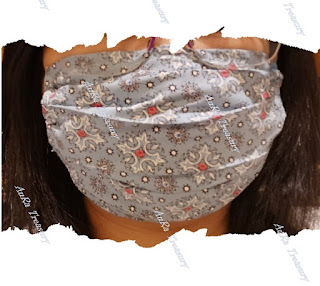
During the current Coronavirus pandemic (Covid-19), there is shortage of PPE.
Talking about N95, surgical masks...let's ask and think: who need them the most? Please reserve all these PPE for healthcare workers.
After reading Covid-19 news everyday, with the understanding about the PPE shortage, I believe handmade cloth face mask is better than wrapping with scarf, bandana, or reusing the surgical masks, right? Cloth masks do have a certain protection effect on blocking the droplets.
However, we must understand handmade cloth mask is a last resort only, it can't replace surgical mask , and most important is keeping social distance and washing hands. When entering medical institution, or a high-risk environment, or a crowded and ventilated place, your must wear medical approved or surgical mask to protect yourself and others.
Detail information about 'facemasks' can be found from CDC Centers for Disease Control and Prevention website.
I start thinking handmade cloth mask, it sounds silly, right?
At least I can do something for my families, my friends, and other people who need it.
Today, we just finished making 20 handmade cloth masks for healthcare workers who work at the hospital, we also attached a note saying 'we made this mask for you to thank you fighting Covid-19 for us'.
It's not a lot but together we make a difference to the world.

After trying few sewing patterns, along with my sewing knowledge and skills, I improvised the design that:
1) can covers the entire front that extends to the chin, below and sides of the face.
2) have double layers with filter insert/pocket between layers.
3) the outer layer is made with high thread count 100% cotton and the inner layer is made with low thread count 100% cotton. (breathe comfortable), both at least 180 thread count.
4) have adjustable ties and can easily replace the ties if need
5) have flexible wired nose piece
Some points to keep in mind while choosing the fabric to use:
1) Outer Layer
It serves the function of repelling water and preventing the penetration of droplets, so it is better to use breathable waterproof fabrics or tightly woven 100% cotton fabrics with high thread count. (at least 180 thread count)
2) Inner layer
It serves the function of absorbing water and the moisture released by the wearer. I suggest using low thread count 100% cotton (at least 180 thread count), also the fabric weave should be different from the outer layer. What does that mean? It means if the outer layer fabric is knitted, then the inner layer fabric should be woven. With this fabric weave combination, it can improve the barrier effect.
3) Insert / middle layer
It serves the function of filter to form a barrier against germs and virus. Non woven fabric is highly suggested as the filter because non woven fabric is neither knitted or woven, it is non-oriented fiber arrangement and that 'disorder' is bonded together to form a fabric. It helps to increase the blocking/barrier effect. Is that mean the thicker the non woven fabric, the higher the fiber density, the better the barrier effect, make sense? But it may cause difficulty in breathing and uncomfortable. In other way, I suggest using two thinner non-woven fabrics is better than the thick non woven fabric.
Melt-blown non woven fabric is not easily find in the market, the common non woven fabrics can be used instead. What are they?
I am NOT suggesting to cut out the Filtrete.
I prefer to use wet tissues, take few out , let it dry, keep them in a clean box. It comes in handy and its shape is quite fit to the cloth mask. You can overlap two layers of dried wet tissues to increase the barrier effect if you want.
Kitchen paper and coffee filter are the last options I recommend as they are not dense enough. If there are the available materials you have, please use two layers of it.


Here are the steps.
















Here is version 2.











I can help! You can help! Everyone can help! Today, right now!
Sewing Template:
1) man size
2) woman size
3) kid size
4) facemask version2
Remark:
For the version 1, including man,woman and kid size, make sure to choose 'paper size: letter size' and page scaling is 'none' while do the printing. Personally, I like version better.
For version 2, you have to outline your sewing template according to the measurement stated in the file.

No comments:
Post a Comment